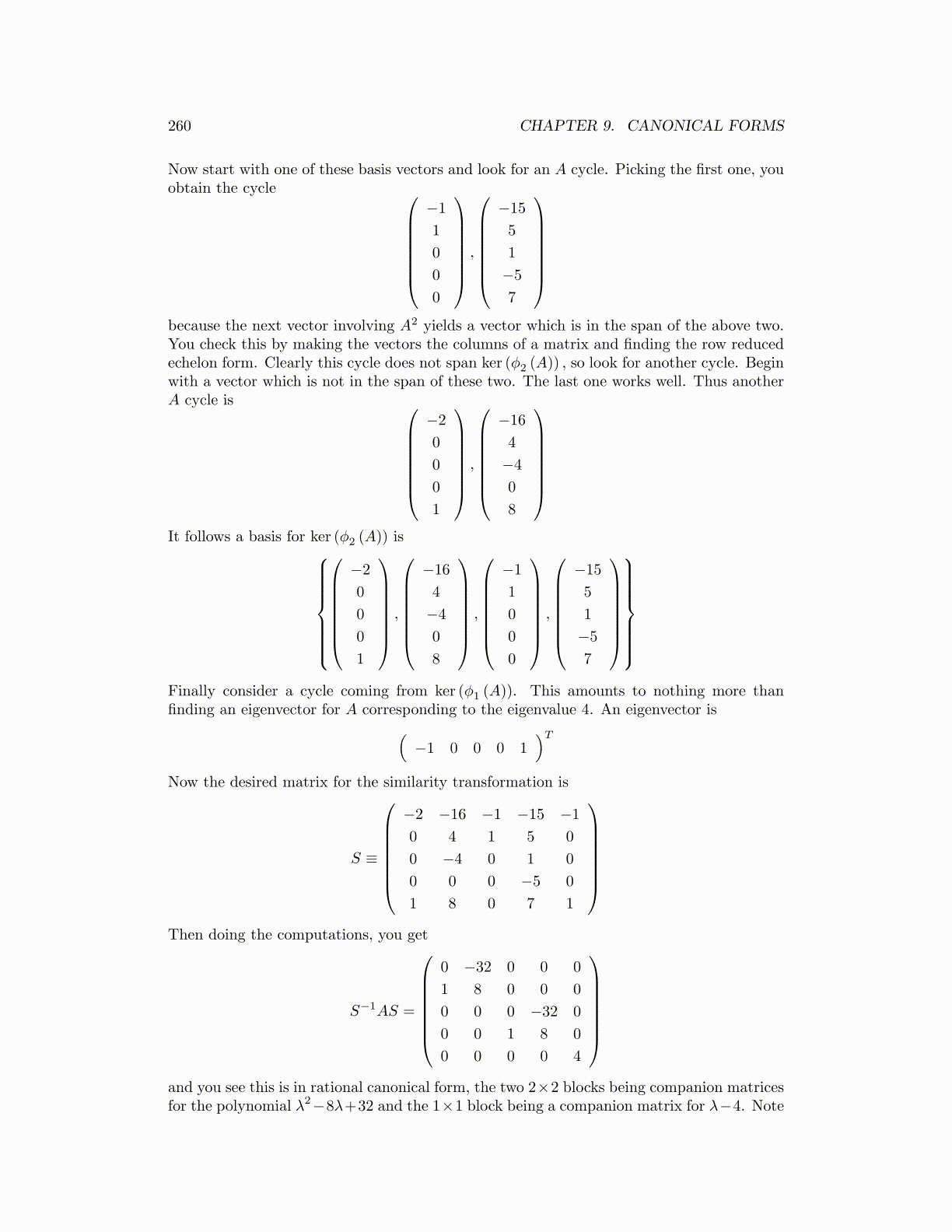
260 CHAPTER 9. CANONICAL FORMS
Now start with one of these basis vectors and look for an A cycle. Picking the first one, youobtain the cycle
−1
1
0
0
0
,
−15
5
1
−5
7
because the next vector involving A2 yields a vector which is in the span of the above two.You check this by making the vectors the columns of a matrix and finding the row reducedechelon form. Clearly this cycle does not span ker (ϕ2 (A)) , so look for another cycle. Beginwith a vector which is not in the span of these two. The last one works well. Thus anotherA cycle is
−2
0
0
0
1
,
−16
4
−4
0
8
It follows a basis for ker (ϕ2 (A)) is
−2
0
0
0
1
,
−16
4
−4
0
8
,
−1
1
0
0
0
,
−15
5
1
−5
7
Finally consider a cycle coming from ker (ϕ1 (A)). This amounts to nothing more thanfinding an eigenvector for A corresponding to the eigenvalue 4. An eigenvector is(
−1 0 0 0 1)T
Now the desired matrix for the similarity transformation is
S ≡
−2 −16 −1 −15 −1
0 4 1 5 0
0 −4 0 1 0
0 0 0 −5 0
1 8 0 7 1
Then doing the computations, you get
S−1AS =
0 −32 0 0 0
1 8 0 0 0
0 0 0 −32 0
0 0 1 8 0
0 0 0 0 4
and you see this is in rational canonical form, the two 2×2 blocks being companion matricesfor the polynomial λ2−8λ+32 and the 1×1 block being a companion matrix for λ−4. Note